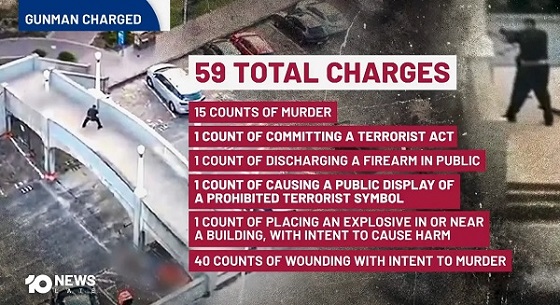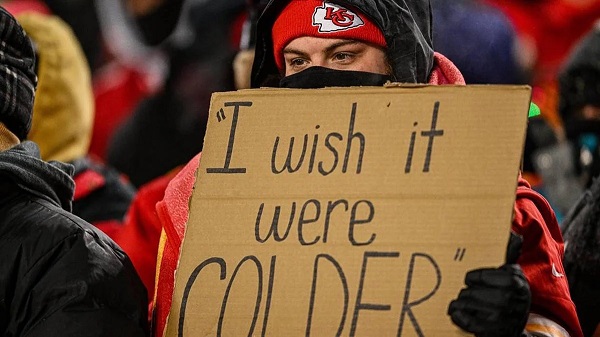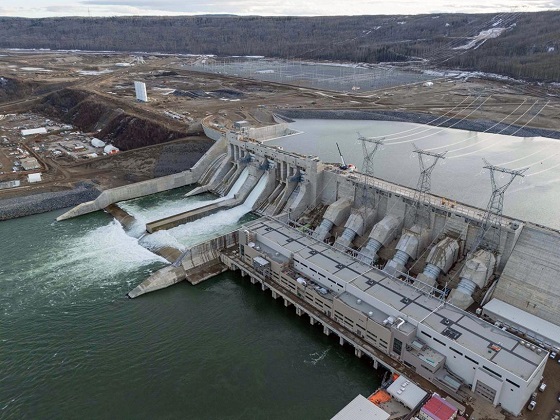Opinion
5,240 voters supported the Ward System. That is more than some elected politicians received. Not to be ignored.

5,240 voters in 2013 supported the ward system of municipal governance but it wasn’t enough. Some will say that settles the issue in perpetuity or forever.
The plebiscite was a vote on the ward system to help find one of many solutions to end the disparity between the north and south in such issues like absence of a high school north of the river or the unequal distribution of recreational facilities.
The city council favored the at-large system, and allocated $30,000 to present a side to the issue. They held a townhall information meeting hosted by popular ex-councillor Larry Pimm who extolled the virtues of the current at-large system. Reminding everyone; “To dance with the one that brought you”. No ward system advocate was invited.
Compare city hall, with $30,000 against a few volunteers with no budget, and you have an epic “David and Goliath” situation.
5,240 voters supported it, considering that the majority of school board trustees garnered fewer votes and they believe they represent the citizens.
The vote was held four years ago during an election, and some will argue that settles the matter forever. No matter that about 10% of the population moves every year, and that someone who is 18,19, 20, or 21 now could vote now that could not have voted then.
One suggested that it would be disrespectful of the voters in 2013 if we were to have another plebiscite in the future. Why do we have elections every 4 years? Possibly to bring in new ideas, people and ways to deal with new issues and events, to change course when a current course is not working?
The major is issue was the disparity between north of the river and south of the river. The last school built north of the river was in 1985, the lack of a high school north of the river and the fact that there is only one recreational centre north of the river with 11 south of the river. The ward system was brought up as a possible way to ensure their voice was heard.
Wards versus at large: Niagara Falls (population of 88,071),candidates discuss. If you want to get in the game, some say a ward system is helpful. … Now, more than a decade into an at-large system where eight councillors are elected to represent the entire city, some candidates are calling for a return to the ward system.
It may better represent the city, but some people find it confusing. One political scientist says we should consider bringing back the ward system with the civic election one week away.
A ward system, essentially, has an elected representative from varying neighbourhoods around the city.
Langara College political scientist Peter Prontzos says it’s a little more democratic and things won’t be rushed through council because there are more voices to be heard and more issues brought to the table.
But he warns there are cons.
“It may be a little more confusing in some ways and there may be occasional gridlock on city council, but I think that’s relatively minor.”
He says right now those who run for office are people with money who only represent wealthy neighbourhoods where something like public transit may not be issue.
Issues like no high school or biased distribution of recreational centres, may get on council’s agenda and be heard through a ward system.
Issues like; On the north side we have (1) the Dawe Centre while on the south side we have; (10), the Downtown Recreation Centre, Michener Aquatic Centre, Downtown Arena, Centrium complex, Collicutt Recreation Centre, Pidherney Curling Centre, Kinex Arena, Kinsmen Community Arenas, Red Deer Curling Centre, and the under-construction Gary W. Harris Centre. The city is also talking about replacing the downtown recreation centre with an expanded 50m pool.
The volunteers proposed 4 wards with 2 councillors per ward, and 5,240 voters supported the idea. Others thought not yet and some were totally against it, period. Should the politicians write off 5,240 voters as a non issue? City should be inclusive of everyone, including those not crowding the stage during the discussions on the latest issue of the day.
Jordy Smith was quite eloquent in his defence of the ward system;
“Wards provide direct representation within the city council. They allow anyone who sees an issue in the city to go to their particular councillor and voice their concern. In this situation, the councillor ensures the person’s, and their district’s, voice is heard. If they don’t represent their community well, their constituents can vote for a new councillor in the next election.
In our current system, a person can reach out to some or all of Red Deer’s councillors, but if the issue isn’t prevalent across the entire city, it is unlikely to enter the council meeting. Important neighbourhood issues may take a backseat to other matters in distant parts of the city. This scenario isn’t always a problem in at-large systems, but it often favours certain parts of a city more than others. This issue is especially true when a majority of councillors all live in a similar part of the city.
In Red Deer, seven of our eight councillors live on the South-East side of the river; in fact, many of our past councils have had disproportionate representation from the South-East side. A ward system gives each part of Red Deer direct representation and a voice in council decisions.”
The point is that the “Ward System” is not a panacea to the disparity issue and no one thinks it is but it could be a step in addressing the issue. Many candidates talk about the “Riverlands” as the panacea to downtown issues, but it is not, it is but a step to addressing the issues.
I ask the candidates who have said that the vote should stand and not be voted on again out of respect for the 2013 voters, should we let the federal vote of 2015, where we elected a Liberal government and the provincial vote of 2015, where we elected a NDP government stand in perpetuity? I didn’t think so. That is why we have votes, because we may change our mind. Thank you.
Read more about the Red Deer Municipal Election on Todayville.
Crime
The Uncomfortable Demographics of Islamist Bloodshed—and Why “Islamophobia” Deflection Increases the Threat


Addressing realities directly is the only path toward protecting communities, confronting extremism, and preventing further loss of life, Canadian national security expert argues.
After attacks by Islamic extremists, a familiar pattern follows. Debate erupts. Commentary and interviews flood the media. Op-eds, narratives, talking points, and competing interpretations proliferate in the immediate aftermath of bloodshed. The brief interval since the Bondi beach attack is no exception.
Many of these responses condemn the violence and call for solidarity between Muslims and non-Muslims, as well as for broader societal unity. Their core message is commendable, and I support it: extremist violence is horrific, societies must stand united, and communities most commonly targeted by Islamic extremists—Jews, Christians, non-Muslim minorities, and moderate Muslims—deserve to live in safety and be protected.
Yet many of these info-space engagements miss the mark or cater to a narrow audience of wonks. A recurring concern is that, at some point, many of these engagements suggest, infer, or outright insinuate that non-Muslims, or predominantly non-Muslim societies, are somehow expected or obligated to interpret these attacks through an Islamic or Muslim-impact lens. This framing is frequently reinforced by a familiar “not a true Muslim” narrative regarding the perpetrators, alongside warnings about the risks of Islamophobia.
These misaligned expectations collide with a number of uncomfortable but unavoidable truths. Extremist groups such as ISIS, Al-Qaeda, Hamas, Hezbollah, and decentralized attackers with no formal affiliations have repeatedly and explicitly justified their violence through interpretations of Islamic texts and Islamic history. While most Muslims reject these interpretations, it remains equally true that large, dynamic groups of Muslims worldwide do not—and that these groups are well prepared to, and regularly do, use violence to advance their version of Islam.
Islamic extremist movements do not, and did not, emerge in a vacuum. They draw from the broader Islamic context. This fact is observable, persistent, and cannot be wished or washed away, no matter how hard some may try or many may wish otherwise.
Given this reality, it follows that for most non-Muslims—many of whom do not have detailed knowledge of Islam, its internal theological debates, historical divisions, or political evolution—and for a considerable number of Muslims as well, Islamic extremist violence is perceived as connected to Islam as it manifests globally. This perception persists regardless of nuance, disclaimers, or internal distinctions within the faith and among its followers.
THE COST OF DENIAL AND DEFLECTION
Denying or deflecting from these observable connections prevents society from addressing the central issues following an Islamic extremist attack in a Western country: the fatalities and injuries, how the violence is perceived and experienced by surviving victims, how it is experienced and understood by the majority non-Muslim population, how it is interpreted by non-Muslim governments responsible for public safety, and how it is received by allied nations. Worse, refusing to confront these difficult truths—or branding legitimate concerns as Islamophobia—creates a vacuum, one readily filled by extremist voices and adversarial actors eager to poison and pollute the discussion.
Following such attacks, in addition to thinking first of the direct victims, I sympathize with my Muslim family, friends, colleagues, moderate Muslims worldwide, and Muslim victims of Islamic extremism, particularly given that anti-Muslim bigotry is a real problem they face. For Muslim victims of Islamic extremism, that bigotry constitutes a second blow they must endure. Personal sympathy, however, does not translate into an obligation to center Muslim communal concerns when they were not the targets of the attack. Nor does it impose a public obligation or override how societies can, do, or should process and respond to violence directed at them by Islamic extremists.
As it applies to the general public in Western nations, the principle is simple: there should be no expectation that non-Muslims consider Islam, inter-Islamic identity conflicts, internal theological disputes, or the broader impact on the global Muslim community, when responding to attacks carried out by Islamic extremists. That is, unless Muslims were the victims, in which case some consideration is appropriate.
Quite bluntly, non-Muslims are not required to do so and are entitled to reject and push back against any suggestion that they must or should. Pointedly, they are not Muslims, a fact far too many now seem to overlook.
The arguments presented here will be uncomfortable for many and will likely provoke polarizing discussion. Nonetheless, they articulate an important, human-centered position regarding how Islamic extremist attacks in Western nations are commonly interpreted and understood by non-Muslim majority populations.
Non-Muslims are free to give no consideration to Muslim interests at any time, particularly following an Islamic extremist attack against non-Muslims in a non-Muslim country. The sole exception is that governments retain an obligation to ensure the safety and protection of their Muslim citizens, who face real and heightened threats during these periods. This does not suggest that non-Muslims cannot consider Muslim community members; it simply affirms that they are under no obligation to do so.
The impulse for Muslims to distance moderate Muslims and Islam from extremist attacks—such as the targeting of Jews in Australia or foiled Christmas market plots in Poland and Germany—is understandable.
Muslims do so to protect their own interests, the interests of fellow Muslims, and the reputation of Islam itself. Yet this impulse frequently collapses into the “No True Scotsman” fallacy, pointing to peaceful Muslims as the baseline while asserting that the attackers were not “true Muslims.”
Such claims oversimplify the reality of Islam as it manifests globally and fail to address the legitimate political and social consequences that follow Islamic extremist attacks in predominantly non-Muslim Western societies. These deflections frequently produce unintended effects, such as strengthening anti-Muslim extremist sentiments and movements and undermining efforts to diminish them.
The central issue for public discourse after an Islamic extremist attack is not debating whether the perpetrators were “true” or “false” Muslims, nor assessing downstream impacts on Muslim communities—unless they were the targets.
It is a societal effort to understand why radical ideologies continue to emerge from varying—yet often overlapping—interpretations of Islam, how political struggles within the Muslim world contribute to these ideologies, and how non-Muslim-majority Western countries can realistically and effectively confront and mitigate threats related to Islamic extremism before the next attack occurs and more non-Muslim and Muslim lives are lost.
Addressing these realities directly is the only path toward protecting communities, confronting extremism, and preventing further loss of life.
Ian Bradbury, a global security specialist with over 25 years experience, transitioned from Defence and NatSec roles to found Terra Nova Strategic Management (2009) and 1NAEF (2014). A TEDx, UN, NATO, and Parliament speaker, he focuses on terrorism, hybrid warfare, conflict aid, stability operations, and geo-strategy.
The Bureau is a reader-supported publication.
To receive new posts and support my work, consider becoming a free or paid subscriber.
International
Bondi Beach Shows Why Self-Defense Is a Vital Right

By
Individuals and communities must take responsibility for their own safety.
|
||||||||||||||||||||||||||||||||||||||||||||||||||
|
|
||||||||||||||||||||||||||||||||||||||||||||||||||
|
||||||||||||||||||||||||||||||||||||||||||||||||||
|
||||||||||||||||||||||||||||||||||||||||||||||||||
|
||||||||||||||||||||||||||||||||||||||||||||||||||
|
||||||||||||||||||||||||||||||||||||||||||||||||||
|
||||||||||||||||||||||||||||||||||||||||||||||||||
|
||||||||||||||||||||||||||||||||||||||||||||||||||
|
||||||||||||||||||||||||||||||||||||||||||||||||||
|
||||||||||||||||||||||||||||||||||||||||||||||||||
|
||||||||||||||||||||||||||||||||||||||||||||||||||
|
||||||||||||||||||||||||||||||||||||||||||||||||||
-

 Digital ID2 days ago
Digital ID2 days agoCanada releases new digital ID app for personal documents despite privacy concerns
-

 Community1 day ago
Community1 day agoCharitable giving on the decline in Canada
-

 Bruce Dowbiggin2 days ago
Bruce Dowbiggin2 days agoNFL Ice Bowls Turn Down The Thermostat on Climate Change Hysteria
-

 Energy2 days ago
Energy2 days agoCanada’s sudden rediscovery of energy ambition has been greeted with a familiar charge: hypocrisy
-

 Energy2 days ago
Energy2 days agoCan we not be hysterical about AI and energy usage?
-

 Crime2 days ago
Crime2 days agoTrump designates fentanyl a ‘weapon of mass destruction’
-

 Energy2 days ago
Energy2 days agoEnergy security matters more than political rhetoric
-

 Alberta1 day ago
Alberta1 day agoCanada’s New Green Deal








